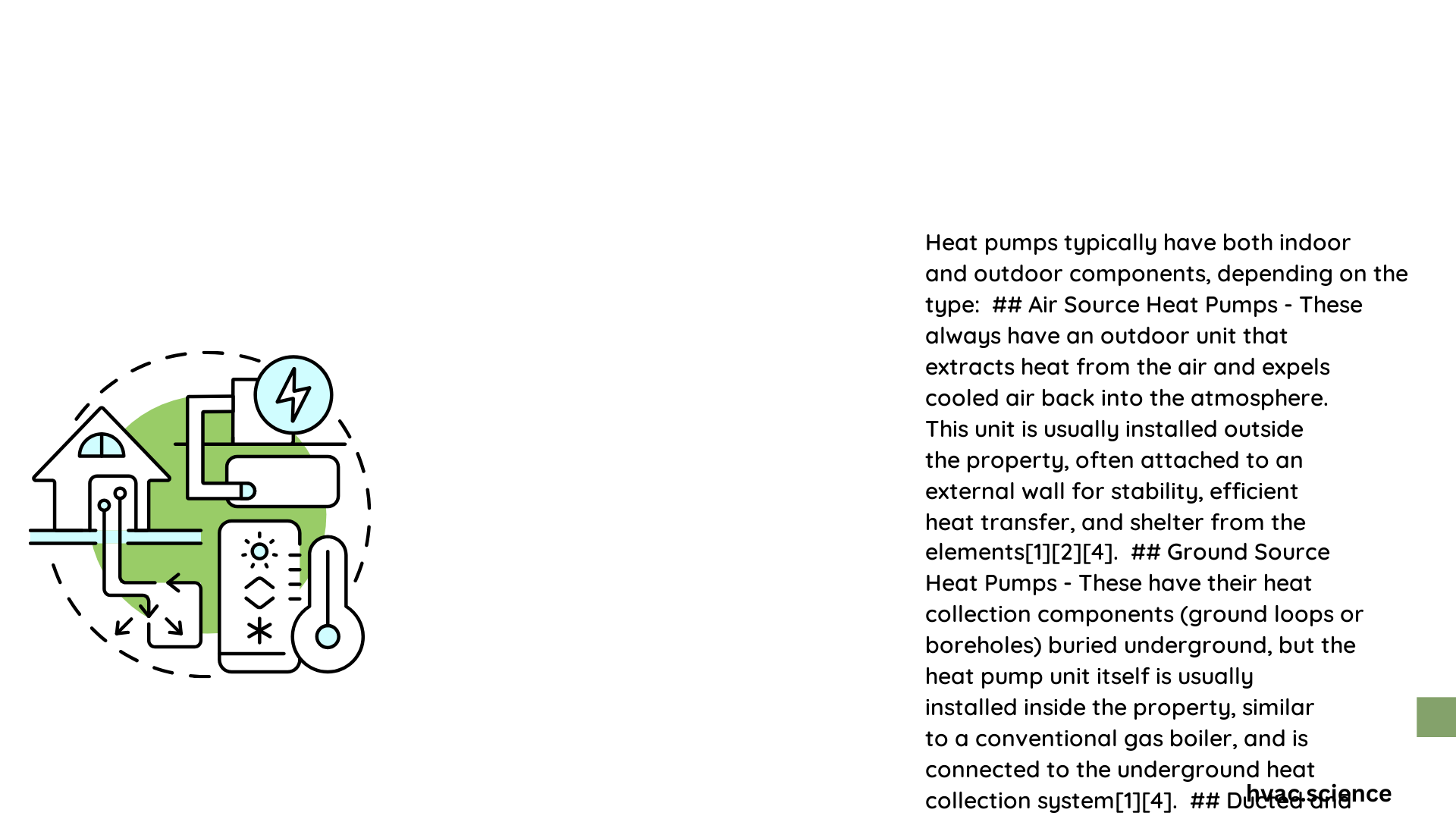Heat pumps can be strategically installed both inside and outside buildings, with placement significantly impacting system performance, efficiency, and energy consumption. The decision depends on specific system type, building architecture, local climate conditions, and available space. Understanding the nuanced requirements for indoor and outdoor heat pump installations is crucial for maximizing thermal comfort and operational effectiveness.
What Determines Heat Pump Location?
Heat pump placement involves multiple critical factors that influence overall system performance. Homeowners and HVAC professionals must carefully evaluate several key considerations:
Where Can Heat Pumps Be Installed?
Heat pumps can be installed in various locations, including:
- Indoor Locations
- Mechanical rooms
- Basements
- Utility spaces
-
Dedicated equipment rooms
-
Outdoor Locations
- External wall mounting
- Ground-level foundations
- Roof installations
- Dedicated equipment platforms
How Do Installation Locations Impact Performance?
| Location Type | Pros | Cons |
|---|---|---|
| Indoor Installation | – Protected from weather – Easier maintenance |
– Limited space requirements – Potential noise issues |
| Outdoor Installation | – Better airflow – Less indoor space usage |
– Weather exposure – Potential efficiency reduction |
What Are Key Placement Considerations?
Airflow Requirements
- Minimum 20 cm clearance from walls
- Unobstructed air circulation
- Protection from direct sunlight
- Avoid areas with excessive moisture
Efficiency Factors
- SEER Rating: Cooling efficiency measurement
- HSPF Rating: Heating performance indicator
- Proper ventilation crucial for optimal performance
What System Types Exist?
- Monoblock Heat Pumps
- All components in single unit
- Typically larger footprint
-
Suitable for specific architectural designs
-
Split Heat Pumps
- Separate indoor/outdoor units
- More flexible installation
- Better for complex building layouts
What Technical Specifications Matter?
- Weight: 100-200 kg for outdoor units
- Space requirement: Approximately 2 x 2 meters
- Electrical connections
- Refrigerant line considerations
- Structural support requirements
How to Choose the Right Location?
Selecting an ideal heat pump location involves:
– Assessing building layout
– Evaluating local climate conditions
– Consulting HVAC professionals
– Checking municipal regulations
– Considering long-term maintenance accessibility
What Are Common Installation Mistakes?
- Blocking airflow
- Inadequate clearance
- Improper electrical connections
- Ignoring manufacturer guidelines
- Overlooking local building codes
Conclusion

Successful heat pump installation requires comprehensive understanding of indoor and outdoor placement strategies. Professional assessment ensures optimal system performance, energy efficiency, and long-term reliability.
